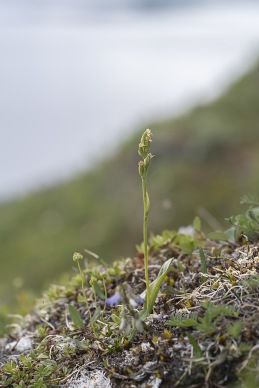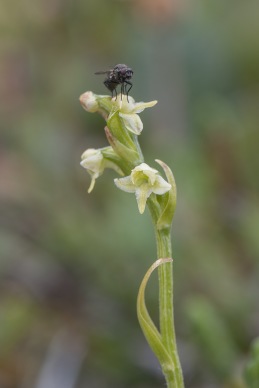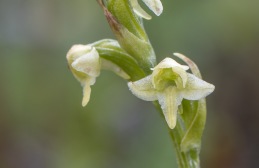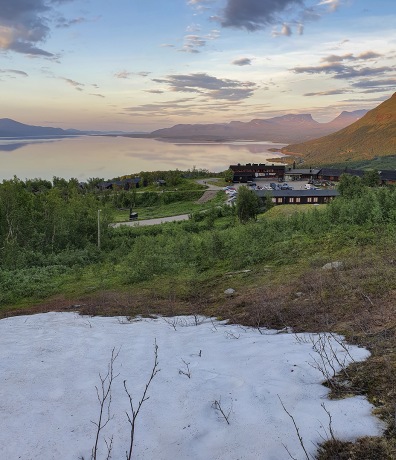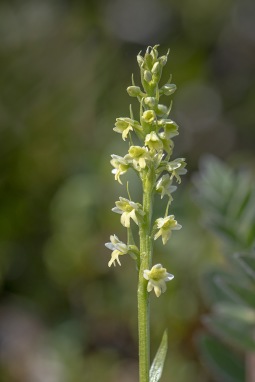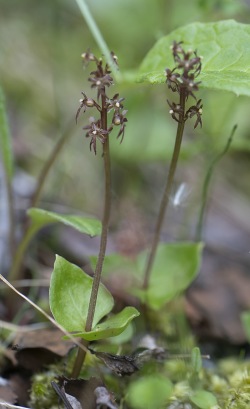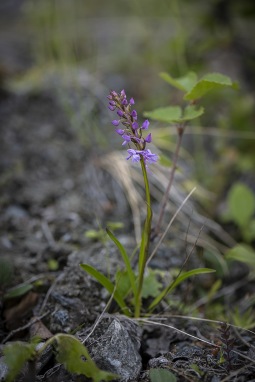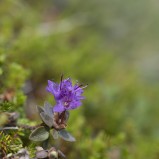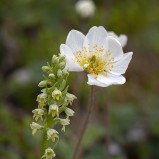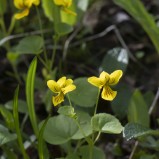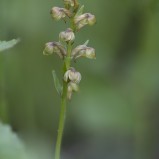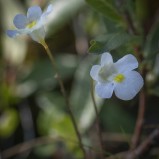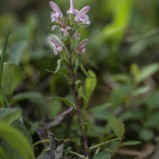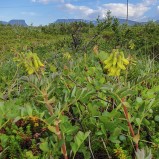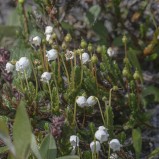Home | About Orchids | Orchid Areas | Galleries | Comments | Contact | Search
Finally, this year it would be time to search for Platanthera obtusata. The date was set for July 7, which after some searching and advice could be a good time to search for this rare orchid. But one should keep in mind that there can be several weeks, when flowering occurs, from one the year to another.
This year, however, it should be a good time, but then the heat came to northern Sweden. A week or two with temperatures of 25-30 degrees in the mountains meant that we anyhow arrived a few days late. Most of the plants we saw had already flowered and started to wither.
After diligent search, however, a couple of plants with fresh flowers were found, so you can say that these paid for the trip.
Not only Platanthera but a lot of other species were found here on the mountain slopes as well. Most abundant was probably Pseudorchis albida subsp. straminea that could certainly be counted in the 100s.
View from the steep slop where Platanthera obtusata subsp. oligantha grows.
Platanthera obtusata subsp. oligantha. The Swedish name for this orchid is lappfela or lapp-yxne,
What is known today is that Platanthera obtusata subsp. oligantha is pollinated by mosquitoes that seek nectar in the short spur, and there are plenty of mosquitoes in this environment. It was also seen that all plants we saw, where the flowers had withered, had seed pods in progress.
In addition to Abisko, the species is found in some localities in Norway and further east in Siberia. In North America it is the subspecies obtusata that can be found.
Our accommodation during our time in Abisko National Park was located at Hotel Fjället in Björkliden, an excellent choice. The hotel is located high with a wonderful view of Torneträsk and Lapporten, the well-known silhouette of the mountains in the distance.
For those who do not want to drive this long distance, it is excellent to go by train to Abisko / Björkliden. Another option if you want to be mobile is to go to e.g. Kiruna and there rent a car.
Despite the warm period, there were still winter snow streaks left. The picture was taken around 23.30. At this time of year, it does not get darker than the picture shows.
In our search for Platanthera, we came across a few more orchids. Below are the six species we saw.
Pseudorchis albida subsp. straminea, is a sister species to the one that is now very rare in southern Sweden, subsp. albida.
Up here in the mountain slopes, it was in large numbers, although it is usually found as single specimens. The picture above shows unusually open flowers. Usually these are more bell-shaped
In the environment, up here in the mountain sides, there are many other interesting species, apart from the orchids, which you will not find at home. Below is a selection of what was seen. (The Swedish name can be seen by hovering with the cursor over the pictures).
1) Rhododendron lapponicum is one of our two Rhododendron species here in Sweden. The second, Rhododendron tomentosum, is far more common. Rhododendron lapponicum can only be found in the mountainous areas of northern Sweden. It is a gnarled small shrub that usually does not grow to a high more than 4-5 cm.
2) Pseudorchis albida subsp. straminea and Dryas octopetala. Here the flowers of Pseudorchis can be seen as you usually can see them, like small bells. The eight petals have given Dryas octopetala its Latin species name. It is believed that this was one of the first to invade our country after the ice age. Lapplands province flower.
3) Viola biflora. The Latin "biflora" means two flowers because there are usually two flowers on each stem. It is the only violet in Sweden that is yellow.
4) Saxifraga aizoides is seen here with two color forms. Common in the calcareous, moist areas of the mountains.
5) Dactylorhiza viridis can be seen here with the color you usually can see.
6) Pinguicula alpina is connected to our northern mountain areas except for an odd occurrence on Gotland! It is like the common, blue Pinguicula, "insectivorous" as this catches and breaks down small flies that get stuck on the sticky leaves.
7) Pedicularis lapponica is the only one of our "spiror" that isn't red or yellow and therefore easy to recognize.
8) Pedicularis hirsuta is quite rare and is only found on calcareous soils in the northern mountain areas.
9) Astragalus frigidus. The Latin "frigidus" means "cold" and refers to the fact that it grows far north. Rare in the mountain areas from Härjedalen and further north.
10) Cassiope tetragona. Common on calcareous soil in the northern mountain areas.


